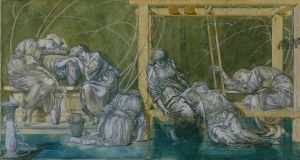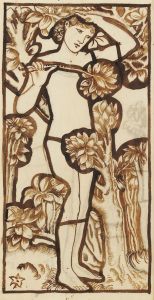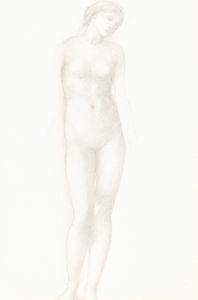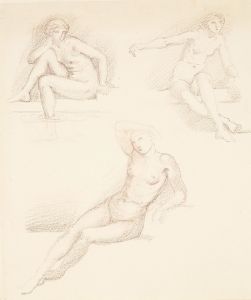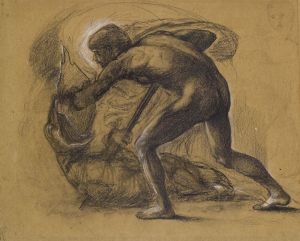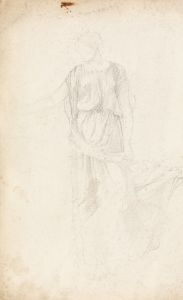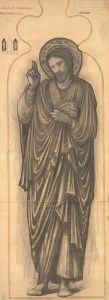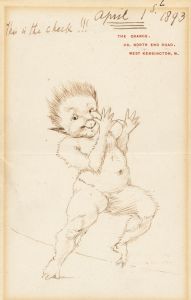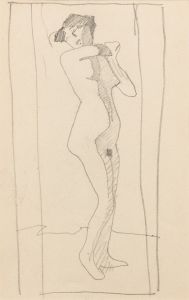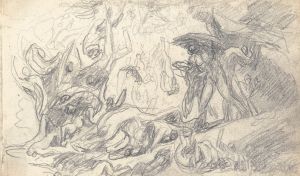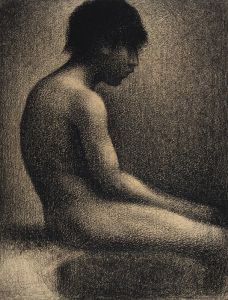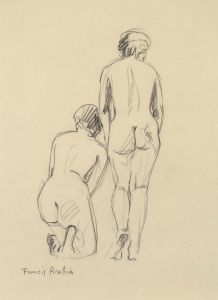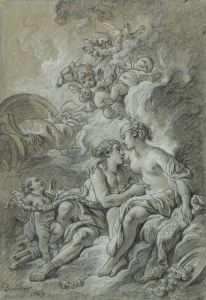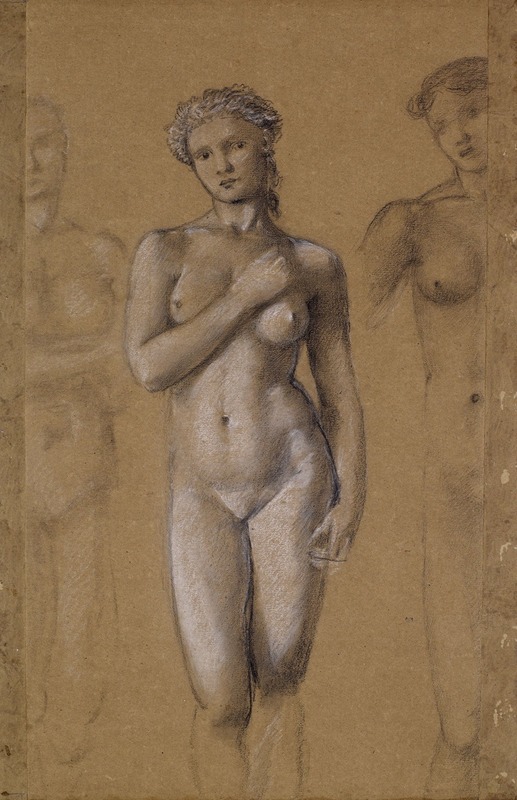
Female Nude – Three Studies, possibly for Venus
A hand-painted replica of Sir Edward Coley Burne-Jones’s masterpiece Female Nude – Three Studies, possibly for Venus, meticulously crafted by professional artists to capture the true essence of the original. Each piece is created with museum-quality canvas and rare mineral pigments, carefully painted by experienced artists with delicate brushstrokes and rich, layered colors to perfectly recreate the texture of the original artwork. Unlike machine-printed reproductions, this hand-painted version brings the painting to life, infused with the artist’s emotions and skill in every stroke. Whether for personal collection or home decoration, it instantly elevates the artistic atmosphere of any space.
"Female Nude – Three Studies, possibly for Venus" is a drawing by the British Pre-Raphaelite artist Sir Edward Coley Burne-Jones (1833–1898). This artwork consists of three studies of a female nude, rendered in pencil on paper. The drawing is believed to have been created as preparatory studies for a larger work, potentially a depiction of Venus, the Roman goddess of love and beauty. However, there is no definitive evidence linking these studies to a specific completed painting by Burne-Jones.
Burne-Jones was a central figure in the Pre-Raphaelite movement, which sought to revive the detail, vivid colors, and complex compositions of early Renaissance art. His works often featured mythological, biblical, and literary themes, with a focus on idealized beauty and a dreamlike quality. The studies in this drawing reflect his meticulous approach to the human form, showcasing his skill in anatomy and his dedication to capturing the grace and elegance of the female figure.
The three studies in the drawing depict the same model in different poses, exploring variations in posture and movement. The use of pencil allows for delicate shading and fine detail, emphasizing the softness and naturalism of the figure. Burne-Jones frequently used preparatory sketches and studies as part of his artistic process, refining his ideas before committing to a final composition.
While the exact date of the drawing is unknown, it likely dates to the latter half of Burne-Jones's career, a period during which he produced many of his most celebrated works. The drawing is now held in a private collection or museum, though its current location and provenance are not widely documented.
This artwork exemplifies Burne-Jones's dedication to the Pre-Raphaelite ideals of beauty and craftsmanship, as well as his interest in classical mythology. It serves as a testament to his skill as a draftsman and his ability to convey emotion and narrative through the human form.





